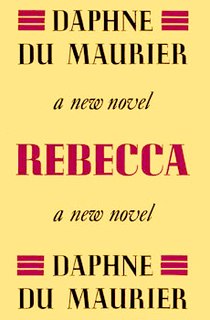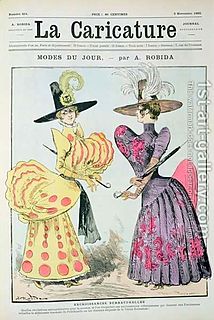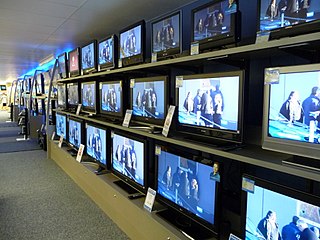
A cartoon is a type of illustration, possibly animated, typically in a non-realistic or semi-realistic style. The specific meaning has evolved over time, but the modern usage usually refers to either: an image or series of images intended for satire, caricature, or humor; or a motion picture that relies on a sequence of illustrations for its animation. Someone who creates cartoons in the first sense is called a cartoonist, and in the second sense they are usually called an animator.

Punch; or, The London Charivari was a British weekly magazine of humour and satire established in 1841 by Henry Mayhew and wood-engraver Ebenezer Landells. Historically, it was most influential in the 1840s and 1850s, when it helped to coin the term "cartoon" in its modern sense as a humorous illustration.

Dame Daphne du Maurier, Lady Browning, was an English author and playwright.

George Louis Palmella Busson du Maurier was a Franco-British cartoonist and writer, known for his drawings in Punch and for his novel Trilby. He was the father of actor Sir Gerald du Maurier and grandfather of writers Angela du Maurier and Dame Daphne du Maurier. He was also the father of Sylvia Llewelyn Davies and grandfather of the five boys who inspired J.M. Barrie's Peter Pan.

An illustration is a decoration, interpretation or visual explanation of a text, concept or process, designed for integration in published media, such as posters, flyers, magazines, books, teaching materials, animations, video games and films.

A "curate's egg" is something that is described – truthfully or not – as partly bad, but also partly good. In its original usage, it referred to something that is obviously and entirely bad, but is described out of politeness as nonetheless having good features that redeem it. This meaning has been largely supplanted by its modern usage, which refers to something that is an indeterminate mix of good and bad, possibly with a preponderance of bad qualities.

Rebecca is a Gothic novel by English author Dame Daphne du Maurier. A best-seller, Rebecca sold 2,829,313 copies between its publication in 1938 and 1965, and the book has never gone out of print. The novel is remembered especially for the character Mrs Danvers, the fictional estate Manderley, and its opening line:
"Last night I dreamt I went to Manderley again."

Clement William Scott was an influential English theatre critic for the Daily Telegraph and other journals, and a playwright, lyricist, translator and travel writer, in the final decades of the 19th century. His style of criticism, acerbic, flowery and carried out on the first night of productions, set the standard for theatre reviewers through to today.

Videotelephony comprises the technologies for the reception and transmission of audio-video signals by users at different locations, for communication between people in real-time. A videophone is a telephone with a video display, capable of simultaneous video and audio for communication between people in real-time. Videoconferencing implies the use of this technology for a group or organizational meeting rather than for individuals, in a videoconference. Telepresence may refer either to a high-quality videotelephony system or to meetup technology, which goes beyond video into robotics. Videoconferencing has also been called "visual collaboration" and is a type of groupware.
As an adjective, Martian means of or pertaining to the planet Mars. A Martian is a hypothetical inhabitant of the planet Mars.

The telectroscope was the first conceptual model of a television or videophone system. The term was used in the 19th century to describe science-based systems of distant seeing.

The Colonel is a farce in three acts by F. C. Burnand based on Jean François Bayard's Le mari à la campagne, first produced in 1844 and produced in London in 1849 by Morris Barnett, adapted as The Serious Family. The story concerns the efforts of two aesthetic impostors to gain control of a family fortune by converting a man's wife and mother-in-law to follow aestheticism. He is so unhappy that he seeks the company of a widow in town. His friend, an American colonel, intervenes to persuade the wife to return to conventional behavior and obey her husband to restore domestic harmony, and the colonel marries the widow himself.
This is a timeline of significant events in comics prior to the 20th century.
The Bystander was a British weekly tabloid magazine that featured reviews, topical drawings, cartoons and short stories. Published from Fleet Street, it was established in 1903 by George Holt Thomas. Its first editor, William Comyns Beaumont, later edited the magazine again from 1928-1932.

Angela du Maurier was an English novelist who also wrote two volumes of autobiography, It's Only the Sister (1951) and Old Maids Remember. She was the sister of Daphne du Maurier.

Arthur Wallis Mills (1878–1940) was a British artist. As well as traditional art forms, Mills also produced artwork and occasional cartoons for Punch Magazine, The Strand Magazine, The Humourist, The Black and White Illustrated Budget and The Royal Magazine in the United Kingdom as well as The Wanganui Chronicle in New Zealand. He also illustrated A Cabinet Secret, the 1908 edition of The Novels of Jane Austen in Ten Volumes, The Zincali - An account of the gypsies of Spain and The Red Book of Heroes.

The history of videotelephony covers the historical development of several technologies which enable the use of live video in addition to voice telecommunications. The concept of videotelephony was first popularized in the late 1870s in both the United States and Europe, although the basic sciences to permit its very earliest trials would take nearly a half century to be discovered. This was first embodied in the device which came to be known as the video telephone, or videophone, and it evolved from intensive research and experimentation in several telecommunication fields, notably electrical telegraphy, telephony, radio, and television.

La Caricature was a satirical journal that was published in Paris, France, between 1880 and 1904. It had a lively and colorful layout, and made full use of the newly invented photogravure technology. Its focus was on social satire rather than political commentary. La Caricature covered the theater, news events, gossip and topical subjects such as the vote for women or seaside vacations. The founding editor, Albert Robida, left in 1892. The journal began to decline in quality, went through various changes of ownership and management, and eventually was merged with a rival tabloid.
Reginald Thomas Cleaver was a British cartoonist notable for his work for Punch and The Daily Graphic.


















